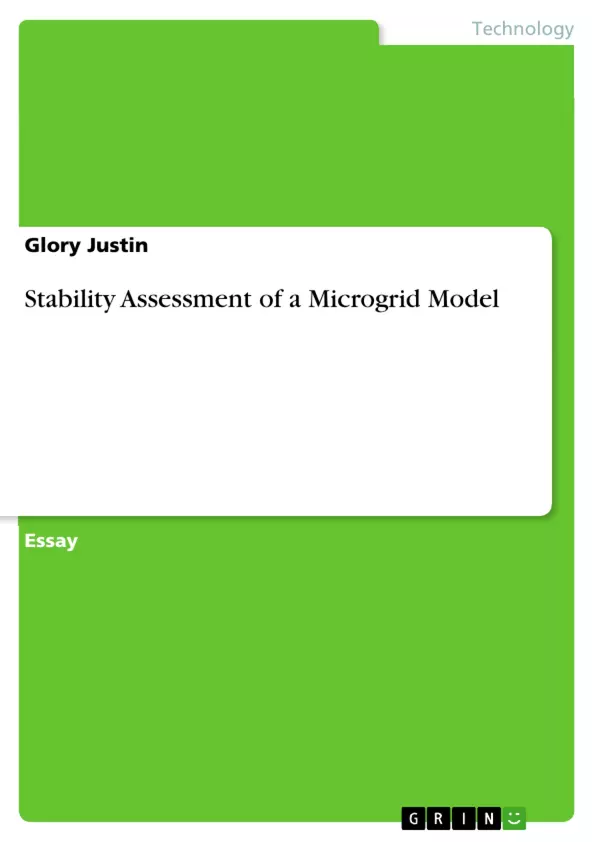This paper covers the simulation of a microgrid model based on the All-in-one test system in the Typhoon real-time simulator. The model is used to illustrate various instability phenomena which lead to system collapse in a power system.
Inhaltsverzeichnis (Table of Contents)
- I. INTRODUCTION
- II. THE ALL-IN-ONE TEST SYSTEM
- III. TYPHOON HARDWARE-IN-THE-LOOP (HIL) SIMULATOR
- A. Libraries
- B. The Model
- C. Parameters
- D. Comparison with the MATLAB model
- IV. STABILITY SCENARIOS
- A. Frequency Stability
- B. Voltage Stability
- C. Electric Machine stability- Transient Angle stability
- V. CONCLUSION AND FUTURE WORK
Zielsetzung und Themenschwerpunkte (Objectives and Key Themes)
This project investigates various stability scenarios in a microgrid model using a real-time simulator called Typhoon. The main objective is to demonstrate the effects of disturbances on the system's stability.
- Microgrid stability analysis
- Modeling of microgrid systems
- Real-time simulation using Typhoon HIL
- Impact of disturbances on microgrid stability
- Analysis of frequency, voltage, and electric machine stability
Zusammenfassung der Kapitel (Chapter Summaries)
- I. INTRODUCTION: This chapter provides an overview of the increasing importance of microgrids, highlighting their unique features and the challenges they present in terms of stability. It discusses the project's objective to illustrate different stability scenarios using a real-time simulator.
- II. THE ALL-IN-ONE TEST SYSTEM: This chapter describes the test system used in the project, which consists of a local area connected to a strong grid. It outlines the system's components and their interconnectedness, designed to represent various transient, frequency, and voltage instability phenomena.
- III. TYPHOON HARDWARE-IN-THE-LOOP (HIL) SIMULATOR: This chapter details the real-time simulator Typhoon HIL and its role in the project. It explains the benefits of using this simulator, its unique features, and its suitability for modeling power electronic components. It also provides an overview of the libraries and components used in the model.
- IV. STABILITY SCENARIOS: This chapter focuses on simulating different stability scenarios in the microgrid model. It covers frequency stability, voltage stability, and electric machine stability, analyzing the effects of disturbances such as load changes and short-circuits.
Schlüsselwörter (Keywords)
This paper explores the stability assessment of a microgrid model, focusing on real-time simulation using Typhoon HIL. Key themes include microgrid stability, frequency stability, voltage stability, electric machine stability, disturbances, and power system analysis.
- Quote paper
- Glory Justin (Author), 2020, Stability Assessment of a Microgrid Model, Munich, GRIN Verlag, https://www.hausarbeiten.de/document/1455300


